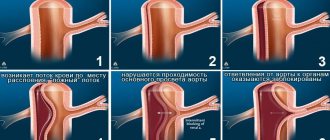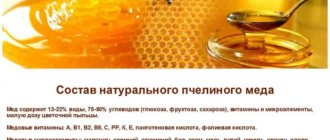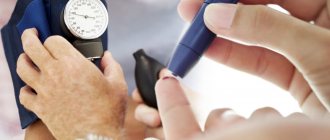Hypertension is an increase in blood pressure from 140/90 mmHg, which manifests itself regularly in a person and requires taking medications. If we talk about isolated systolic hypertension, then this form of arterial hypertension occurs mainly in elderly people over 60 years of age. In this case, only an increase in systolic pressure is observed, diastolic pressure remains normal - below 90 mmHg.
If we talk about the criteria for the disease, then until the mid-90s it was determined that the diagnosis of isolated systolic hypertension is established if the systolic pressure reaches 160 mmHg. But already in 1999, WHO determined that this indicator should be reduced to 140 mmHg.
Depending on the indicators of systolic blood pressure, three degrees of the disease are distinguished:
- 1st degree – 140-159 mmHg;
- 2nd degree – 160-179 mmHg;
- 3rd degree – 180 mmHg.
Causes of ISH
If we talk about the causes of ISH, then old age is not one of them, although we cannot exclude the fact that age-related changes in the body still affect the course of the disease, the features of its development and manifestations. The main causes include neurohormonal dysfunction and hemodynamic factors. It is worth noting that the severity of isolated systolic hypertension in no way depends on atherosclerosis, which is very often diagnosed in older people.
You can also identify additional factors that can provoke the development of ISH:
- abuse of fatty and too salty foods;
- insufficient amount of minerals in the body - potassium, magnesium;
- excess weight, leading to disturbances in the functioning of blood vessels;
- low physical activity, which helps reduce vascular tone;
- stress – constant being in a state of emotional tension has a detrimental effect on the functioning of the heart and blood vessels;
- diseases such as diabetes, liver problems.
Types of disease
During the diagnostic process, a doctor can identify a certain type of isolated systolic hypertension. Pathology is classified into the following types:
- Primary or essential. The causes of this disease have not been established, and hypertension is not a consequence of other vascular pathologies or other organs/systems. As a rule, primary isolated systolic hypertension is inherited.
- Secondary or symptomatic. Appears against the background of pathologies of the brain, kidneys, etc.
- False forms of isolated systolic hypertension. These include “white coat hypertension,” which occurs in people with a fear of doctors, and orthostatic hypertension, which is caused by head injuries.
How is ISG developing?
In older people, there is a significant decrease in the elasticity of the arteries. In addition, processes of deposition of glycosaminoglycans, as well as calcium, elastin and collagen, occur. This significantly reduces the ability of blood vessels to respond correctly to pressure surges, in particular, its increase. In addition to problems with blood pressure, older people experience changes in the functioning of the kidneys and cardiovascular system, and decreased cerebral circulation.
By the age of 50, there is an increase in the volume of the atria, sclerosis of the glomeruli of the kidneys, and a decrease in the production of endothelium-dependent relaxation factors. It is also worth noting that the appearance of ISH largely depends on the genetic disposition of the patient.
There are primary and secondary forms of the disease. If we talk about the primary form of arterial hypertension, then there are no other diseases that provoke its appearance. As for the secondary form, it is often provoked by an increase in the volume of the heart and can occur with atrioventricular block, anemia, and some other diseases.
ISOLATED SYSTOLIC HYPERTENSION IN THE ELDERLY: PATHOPHYSIOLOGY, DIAGNOSIS AND TREATMENT
Isolated systolic hypertension (ISH) is diagnosed when systolic arterial blood pressure (SBP) is і 160 mm at.al. Hg and diastolic blood pressure (DBP) is < 90 mm et.al. Hg. ISH prevalence in the elderly population (60-85 years old) is between 10% and 20%. Primary and secondary ISH must be distinguished. Diagnosis of ISH is based on a few arterial pressure measurements obtained from repeated examinations. Diagnosis of false hypertension is possible during this examinations and Osier test for its evaluation is recommended. ISH treatment has been shown to prevent cardiovascular complications, diminish stroke and myocardial incidence on 36% and 27%, respectively. Patient's age and accrnpanying disorders must be considered in drug therapy prescribing. ,First line' drugs recommended for the ISH therapy are thiazide diuretics, betablockers, prolonger calcium antagonists and angiotensin converting enzyme antagonists. Therapy must result in SBP diminishing to 140-160 mm et.al.Hg and can include two-stage scheme if necessary. Drug therapy with diuretics as well as beta-blockers (in case of cardiac conductivity disturbances) must be under heart rate and EGG control held. One drug in minimal doses is recommended as an initial therapy. When the effect is insufficient doses can be increased or drug from another class can be selected but combined therapy is preferable.
* G.G. Arabidae, professor, hon. activities Sciences of the Russian Federation, Head of the Department of Arterial Hypertension at the Institute of Cardiology named after. A.L. Myasnikov Cardiology Research Center of the Russian Academy of Medical Sciences. ** Gr.G. Arabidze, Ph.D. honey. Sciences, assistant at the Department of Internal Medicine No. 2, Faculty of Medicine, MMSI named after. ON THE. Semashko. prof. GG Arabdze MD, owned scientist of the Russian federation, head of the department of arterial hypertension, Miasnikov, Institute of cardiology, Cardiology research center, Russian academy of medical Sciences. Gr. G. Arabidze, candidate of medical Sciences, assistant of the department of Internal medicine No. 2, therapeutic faculty, Semashko Moscow Medical Stomatological Institutes.
AND
Isolated systolic hypertension (ISH) affects 10 to 20% of elderly people. The increased risk of cardiovascular disease among patients with hypertension compared with that of age-matched normotensive patients decreases with increasing age at which high blood pressure (BP) appears, but even in older patients, systolic hypertension, both isolated and combined with elevated diastolic blood pressure (DBP), remains an important prognostic factor for cardiovascular diseases and mortality from them. Moreover, the frequency of cardiovascular complications in the elderly is closely related only to systolic blood pressure (SBP) [1]. In this regard, the concept of ISH, as well as the issues of its prevalence, pathophysiology, diagnosis and treatment, which this article is devoted to, are of undoubted interest for practicing physicians.
THE CONCEPT OF ISH AND ITS PREVALENCE
ISH is arbitrarily defined as SBP greater than or equal to 160 mmHg. Art. with DBP less than 90 mm Hg. Patients aged 60-85 years are considered elderly. SBP increases until at least age 80, while DBP increases only until age 50, after which DBP either levels off or decreases slightly. These trends in SBP and DBP, observed in a number of studies, explain the increase in pulse pressure and the increase in the prevalence of ISH with age [2, 3]. The prevalence of ISH has been assessed in numerous studies, but diagnosis has been made using different methods. In most cases, BP was measured in the clinic, and in some studies - at home. The number of blood pressure measurements also varies: they were performed either at a time, during one examination, or during two or even three separate appointments. The prevalence of ISH in many studies was calculated using a DBP threshold of 90 mmHg, or both 90 mmHg and 95 mmHg. Art., and in a smaller number of studies - with DBP only 95 mm Hg. Art. These differences in methodology must be taken into account when comparing or summarizing the results of studies. The prevalence of ISH estimated from a meta-analysis of data from multiple studies using a second-order regression model adjusted for sample size was 2.8% for 30 years of age, 0.1% for 40 years of age, 0.8% for 50 years of age, 5% for 60 years, 12.6% for 70 years and 23.6% for 80 years. The prevalence in women was on average 43% higher than in men (p < 0.01) [1].
PATHOPHYSIOLOGY
Pulse pressure - the difference between SBP and DBP - is determined by the distensibility of the arterial vascular bed, the stroke volume of the heart and, to a lesser extent, the ejection rate from the left ventricle. Mean blood pressure, which is the average between SBP and DBP, depends on cardiac output and total peripheral resistance. ISH, by definition, is characterized by an increase in pulse pressure, but not necessarily an increase in mean blood pressure. It is necessary to distinguish between primary and secondary ISH. Secondary forms can be caused by an increase in cardiac output (for example, with thyrotoxicosis or anemia) or the superposition of direct and reflected pressure waves in systole (for example, with arteriosclerotic obliteration of the lower extremities) [1]. Primary ISH occurs when SBP in previously normotensive patients rises above 160 mmHg without any obvious cause. However, it is likely that in some cases ISH may occur in hypertensive patients with a pre-existing increase in SBP and DBP, if SBP remains unchanged or even increases, while DBP decreases [1]. The hemodynamic mechanisms of primary ISH in elderly people require further clarification. Available data indicate that the main cause of primary ISH in patients over the age of 50 years can be considered a decrease in the distensibility of the aorta and arteries, leading to a loss of their ability to dampen pressure pulsations in systole and diastole. Increased aortic and arterial stiffness in elderly patients with ISH is likely due to the aging process: older age is associated with loss of elasticity of arterial wall fibers and deposition of collagen, elastin, glycosaminoglycans and calcium. With age, when the number of beta-adrenergic receptors that mediate vasodilation decreases, vasoconstrictor tone in large arteries may increase [4]. Many histological changes that occur with age in the walls of blood vessels are similar to atherosclerotic ones. However, the role of atherosclerosis in the pathogenesis of ISH in the elderly remains controversial. Clinical practice shows that in many patients with severe forms of widespread atherosclerosis, SBP remains within normal limits. In contrast, in some populations with a low prevalence of atherosclerosis, SBP increases with age and develops ISH.
DIAGNOSTICS
The methods used to establish the diagnosis of ISH vary: 5 blood pressure measurements have been described during each of the two examinations; other investigators performed 6 BP measurements at 25-minute intervals per visit. Because BP variability increases with age, BP should be measured several times during repeated examinations to establish the diagnosis of ISH. If SBP exceeds 160 mm Hg. when DBP is below 90 mmHg, the diagnosis of ISH is made. When diagnosing ISH, it is necessary to keep in mind the possibility of identifying pseudohypertension, which is characterized by an increase in pressure in the measuring cuff during indirect measurement of blood pressure, while intra-arterial pressure values are within normal limits. Pseudohypertension is caused by increased stiffness of the brachial artery wall or surrounding tissue, requiring higher cuff pressure to compress the artery. Since the stiffness of the large arteries increases with age, pseudohypertension is much more common in older people [5, 6]. The Osler test is used to detect pseudohypertension [6]. The measuring cuff placed around the shoulder is inflated above systolic pressure, and the radial and brachial arteries are carefully palpated. If one of these arteries is clearly palpable despite the absence of pulsation during cuff inflation, the patient is Osler-positive, having falsely elevated SBP or DBP with a difference between the cuff and intra-arterial pressures of 10-30 mm Hg. The prevalence of a positive Osler test increases from 0% for those aged less than 50 years to 2% in the age group 50-69 years and to 5 and 26%, respectively, for 70- and 80-year-olds, and among patients with ISH (DBP less than 90 mm Hg .) it is 24%.
TREATMENT
Medical opinions differ on when and how to treat ISH in the elderly. Some researchers believe that treatment of patients with uncomplicated increases in SBP should be limited to regular monitoring only. The American Working Group on Hypertension in the Elderly considers non-drug treatment of patients with ISH to be advisable [7], mainly through diet and lifestyle changes. Non-drug therapy also includes standardized physical activity, autogenic training, muscle relaxation, electrosleep and physiological bioacoustic influences (music). However, many doctors strive to reduce the risk of cardiovascular complications and resort to drug therapy. The latter is definitely indicated in cases where SBP exceeds 220 mmHg. or have cardiovascular complications. The feasibility of drug treatment for elderly patients with ISH was finally proven in the completed SHEP study (USA). The final data were obtained from a study of 4736 patients over the age of 60 years (on average 72 years), suffering from ISH - SBP 160-219 mm Hg, DBP below 90 mm Hg. Art., who for 4.5 years received placebo-controlled therapy with a thiazide diuretic in small doses (chlorthalidone 12.5-25 mg/day), adding atenolol if necessary. The result of treatment was a reduction in the incidence of strokes and myocardial infarction by 36 and 27%, respectively [8]. When choosing drug treatment, the physician must take into account two main factors - the age of the patient and the hemodynamic mechanisms underlying ISH in the elderly. These factors must be taken into account, since in elderly patients, compared with middle-aged patients, certain antihypertensive drugs have a greater or lesser effect on blood pressure. Such differences in drug efficacy in the elderly may reflect increases in blood pressure variability and vasoconstrictor tone with age, pronounced baroreflex impairment and orthostatic hypotension in old age, as well as age-related changes in the pharmacokinetics of individual antihypertensive drugs [1]. Vasoactive drugs that reduce the smooth muscle tone of large arteries effectively increase their distensibility. This has been shown for calcium antagonists, angiotensin-converting enzyme inhibitors (ACEIs), nitrates, and beta-blockers with sympathomimetic activity such as panadol (Wisken). SBP in patients with ISH also decreases with a decrease in the volume of ejection from the left ventricle during each cardiac cycle. Diuretics, even when taken chronically, reduce both plasma volume and stroke volume, and this may explain their effectiveness in reducing SBP in elderly patients with ISH [1]. The greatest experience in the treatment of ISH in old age has been accumulated in relation to diuretics. Based on the above, for the treatment and secondary prevention of complications of ISH, first-line antihypertensive drugs are recommended, i.e., those that do not disrupt lipid, carbohydrate and purine metabolism during long-term use, do not retain fluid in the body, do not provoke “rebound” hypertension, and do not cause pathological orthostatic reaction that does not inhibit the activity of the central nervous system. First-line drugs include β-blockers, ACE inhibitors, calcium antagonists, and thiazide diuretics. The main representatives of these classes of drugs, as well as recommended doses and number of doses per day are given in table [9].
Drugs used to treat IS
| A drug | Dose, mg | Number of appointments per day |
| ACEI: | ||
| Captopril() capoten | 12,5-25-50 | 1-3 |
| Enapril (Renitec) | 5-20 | 1-2 |
| Cilazapril(inhibase) | 2,5-5 | 1 |
| Ramipril(tritace) | 2,5-5 | 1 |
| Calcium antagonists* | ||
| Nifedipine(adalat) | 10 | 3 |
| Isradipin(lomir) | 2,5-5 | 2 |
| Verapamil(isoptin) | 240 (1 tablet) | 1 |
| Amlodipine (norvasc) | 5-10 | 1 |
| Amlodipine (norvasc) | ||
| b-Adrenergic blockers: | 10 | 1-2 |
| Pindolol(wisken) | 50-100 | 1 |
| Atenolol (tenormin) | 10 | 1 |
| Bisoprol (concor) | 100 | 1 |
| Metoprolol (lopresol) | 100 | 1 |
| Diuretics: | ||
| Hypothiazide | 12,5-25 | Once in the morning every day or every other day |
| *Preferably long-acting | ||
The result of drug therapy should be a decrease in SBP to 140-160 mmHg. Art. while maintaining DBP at 70 mm Hg. Art. However, it must be remembered that with a high initial SBP, blood pressure should decrease in two stages, first by no more than 25% of the initial level, and then, if the patient’s condition allows (there is no dizziness, nausea, angina pectoris and other signs of transient disorders of cerebral and coronary circulation) , up to 140-160 mm Hg. [10]. The need for a two-stage reduction in blood pressure is due to the fact that in most cases, elderly patients with initially high SBP suffer from atherosclerosis of the extracranial and coronary arteries, and a sharp decrease in blood pressure can lead to impaired cerebral and coronary circulation. In old age, disruption of the conduction system of the heart is often observed. For this reason, in people over 60 years of age, when using beta-blockers, heart rate and ECG should be monitored. Special ECG monitoring is required if the patient is constantly taking diuretics. Treatment should begin with one drug in the minimum recommended doses. If the effect of monotherapy is insufficient, you can increase the dose or change the class of the drug. However, it is more rational to add a second drug. The following combinations of drugs are recommended: b-blocker + diuretic; ACEI + diuretic; ACEI + long-acting calcium antagonist. The ultimate goal of treatment of elderly patients with ISH is not the reduction of blood pressure itself, but the prevention of complications (often fatal) of elevated SBP and, consequently, prolongation of life, as well as improvement of its quality. The latter is achieved mainly by preventing cardiovascular complications of systolic hypertension, maintaining the physical, mental and psycho-emotional state of patients. The side effect of drug therapy should be minor.
Literature:
1 . Staessen J, Amery A, Fogard R. Isolated systolic hypertension in the elderly. J Hypertension 1990;8:393-405. 2. Kannel WB, Gordon T. Evaluation of cardiovascular risk in the elderly. Bull NY Acad Med 1978;54:573-91. 3. Staessen J, Bulpitt C, Fagard R, et al. Four urinary cations and blood pressure: a population study in two Belgian towns. Am J Epidemiol 1983; 117:676-87. 4. Shaken DD, Roth GS. Reduced betaadrenergic receptor concentrations in aging man. Nature 1977;267:855-8. 5. Spence JD, Sibbald WJ, Cape RD. Pseudohypertension in the elderly. Clin. Sci Mol Med 1978;55(suppl.4):399-402. 6. Meserii FH, Ventura HO, Amodeo C. Osier's maneuver and pseudohypertension. N Engl J Med 1985;312:1548-51. 7. The Working Group on Hypertension in the elderly: Statement on hypertension in the elderly. JAMA 1986;256:70-4. 8. SHEP Research Group: Prevention of Stroke by Antihypertensive Drug Treatment in Older Persons with Isolated Systolic hypertension. JAMA 1991,-265:3255-64. 9. Arabidze G.G. Treatment tactics for patients with mild arterial hypertension. Russian Medical Journal 1996;2:80-3. 10. Arabidze G.G., Katsnelson A.A., Bykov A.V., Balishanskaya T.I. Features of treatment of patients with severe and malignant arterial hypertension. Cardiology 1995; 10:28-33.
Symptoms to watch out for
If we talk about symptoms, it is worth noting that in some cases a person may not feel an increase in SBP at all and lead a normal lifestyle. And high pressure readings will be determined only at the time of its measurement. But not all ISH is asymptomatic. A person may experience severe headaches, dizziness, and pain in the heart area. An unsteady gait, deterioration of hearing and vision are also often added.
As is typical for isolated systolic hypertension, the increase in blood pressure may not last so long, and SBP levels will return to normal on their own. But very often hypertensive crises occur, which are accompanied by persistent symptoms and can cause disruptions in the functioning of the cardiovascular system, in some cases even leading to death.
That is why ISG should not be ignored. If you have this disease, you need to regularly visit the doctor, undergo effective treatment, and take preventive measures.
Diagnosis of the disease
Diagnostics consists of several basic methods, and only with a comprehensive examination can an accurate diagnosis be established. First of all, the doctor must collect anamnesis, measure the patient’s blood pressure and pulse. But one measurement will not be enough to make a conclusion, so the patient may be admitted to the hospital for monitoring of indicators or invited for a follow-up appointment in a few weeks.
Also, diagnostic methods that cannot be avoided in this case include electrocardiogram, echocardiography, Dopplerography and biochemical blood test. Based on a comprehensive examination, an accurate diagnosis can already be established, which will help select effective treatment.
Features of treatment
If we talk about treatment, it is first of all started using non-drug methods of therapy. This is monitoring the patient’s diet, excluding fatty and salty foods from the diet; controlling a person’s weight if he is overweight (if possible, you need to get rid of extra pounds); moderate physical activity, which will help strengthen the heart and blood vessels, improve blood circulation; rejection of bad habits; relaxation with music.
Important! As for medications, only the doctor selects them, taking into account the hemodynamic mechanisms and age of the patient.
Typically, drug treatment consists of taking medications such as:
- diuretics are medications that help lower blood pressure, reduce the stroke volume of the heart, and reduce the likelihood of death due to a sharp increase in blood pressure. Diuretics also improve the distensibility of arteries;
- adrenergic blockers – protect against cerebrovascular complications;
- calcium antagonists – improve the elasticity of the arteries, reducing systolic pressure;
- ACE inhibitors – enhance the effect of calcium antagonists.
The essence of pathology
Isolated systolic arterial hypertension (ISAH) is an increase in systolic blood pressure (SBP) over 140 mm Hg. Art., diastolic pressure (DBP) is normal or slightly reduced. Increased pulse pressure increases the risk of heart and vascular diseases.
Isolated systolic arterial hypertension is detected in 65-75% of cases of arterial hypertension in persons over 65 years of age. The disease increases the risk of death from pathologies of the heart and blood vessels by 5 times, and the risk of stroke by 2.5 times.
Cardiovascular disease is the leading cause of death in older people. The most common is arterial hypertension, which is diagnosed in approximately 50% of people over 60 years of age.
Pathological processes occur predominantly in the older generation, which does not exclude their development at a young age.
ISAH is not an independent disease; it is a special form of hypertension.
There are three degrees of hypertension, which depend on the values of systolic pressure. The first (mild) degree is characterized by indicators of 140-159 mmHg; second (moderate) – 160-179; third (severe) – 180 or more.
It is customary to distinguish a borderline form of hypertension, in which systolic pressure varies from 140 to 149, diastolic pressure does not exceed 90.






